Growing bell peppers indoors offers a delightful blend of challenge and reward, perfect for both fledgling gardeners and seasoned green thumbs. Imagine the vibrant hues and fresh crunch of homegrown peppers, flourishing right inside your home—a true testament to the wonders of indoor gardening.
For beginners, the journey of cultivating bell peppers indoors promises a hands-on education in plant care, all while providing the satisfaction of nurturing something from seed to harvest. Experienced gardeners will find joy in fine-tuning their skills, experimenting with indoor conditions to yield a bountiful crop.
In this article, we’ll guide you through selecting the right pepper varieties and setting up an ideal growing environment, ensuring your plants thrive. You’ll learn practical tips on light, soil, and watering, tailored to help you overcome common challenges and celebrate your indoor gardening success.
Select Suitable Bell Pepper Seeds
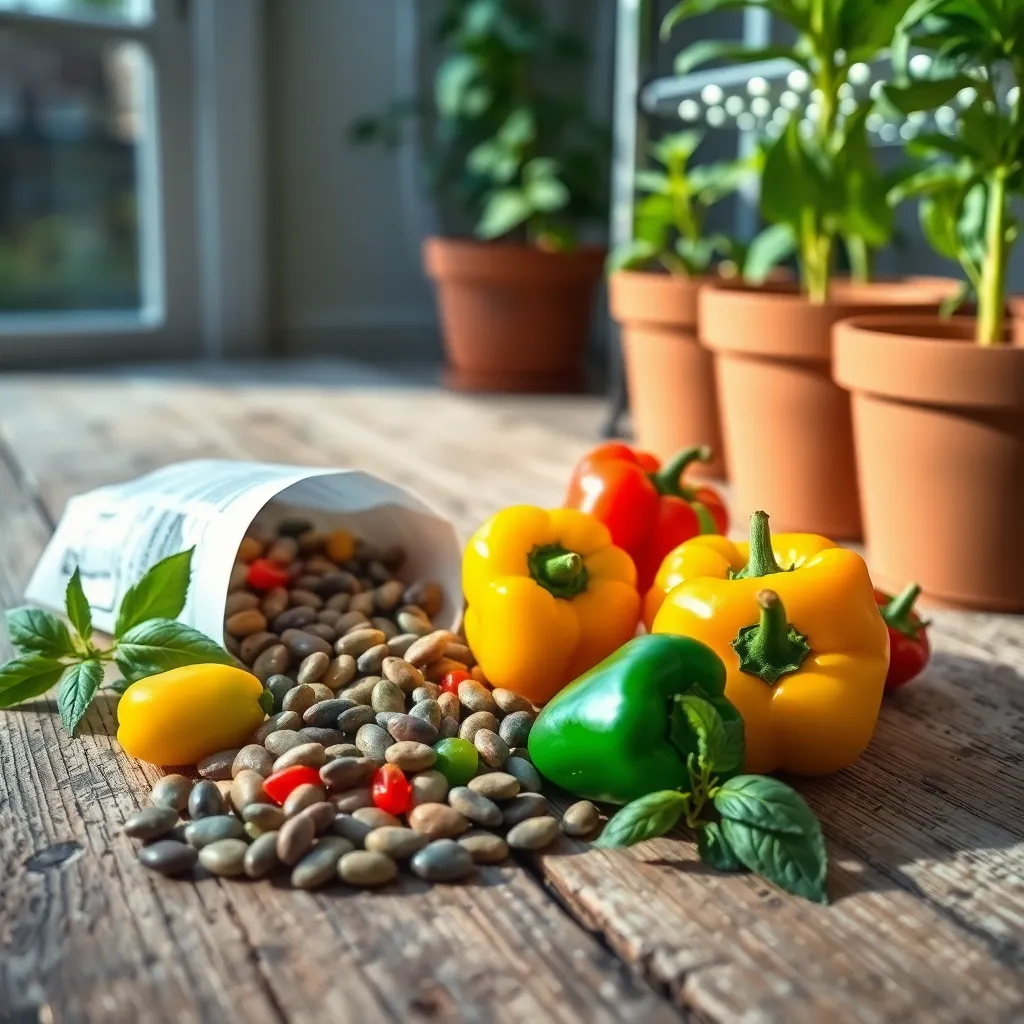
Choosing the right bell pepper seeds is crucial for successful indoor growing. Consider varieties that are specifically bred for compact growth, as these will thrive better in limited space.
Look for seeds labeled as “dwarf” or “miniature,” which are often ideal for container gardening. These types generally have a shorter time to maturity, meaning you can enjoy fresh peppers more quickly.
It’s important to select seeds that are resistant to common diseases such as tobacco mosaic virus. Disease-resistant varieties can minimize potential issues and increase your chances of a bountiful harvest.
For those seeking a bit more adventure, try growing heirloom varieties for unique flavors and colors. Heirloom seeds can offer a more diverse palette of taste and appearance, adding both visual and culinary interest to your indoor garden.
Prepare Indoor Planting Containers
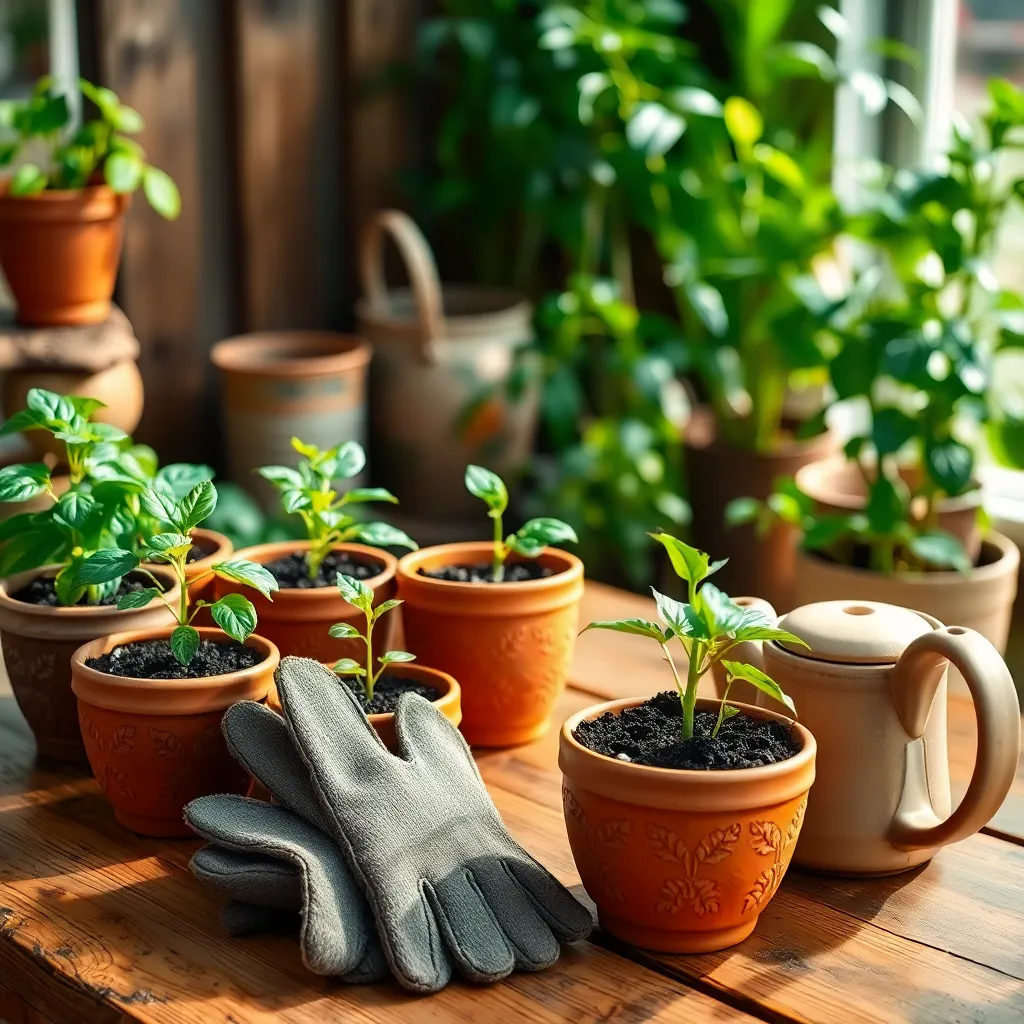
To start growing bell peppers indoors, choosing the right containers is crucial for plant health and productivity. Opt for pots that are at least 12 inches in diameter and have good drainage holes to prevent waterlogging.
Using a high-quality potting mix is essential for supporting the growth of bell peppers. A mix enriched with organic matter and perlite or vermiculite will provide the necessary nutrients and aeration.
Before planting, ensure that each container is thoroughly cleaned to avoid any disease or pest issues. A simple solution of water and mild soap can be used to wash the containers, and it’s important to rinse them well.
For optimal growth, place a layer of gravel or small stones at the bottom of each pot to further enhance drainage. This step can be particularly beneficial if your potting mix tends to retain moisture.
Additionally, consider using self-watering pots if you travel frequently or tend to forget regular watering. These pots help maintain consistent soil moisture, which is key to healthy bell pepper plants.
Once containers are prepared, position them in a location that receives plenty of sunlight, ideally near a south-facing window. Bell peppers need at least 6-8 hours of sunlight daily to thrive indoors.
Ensure Optimal Lighting Conditions
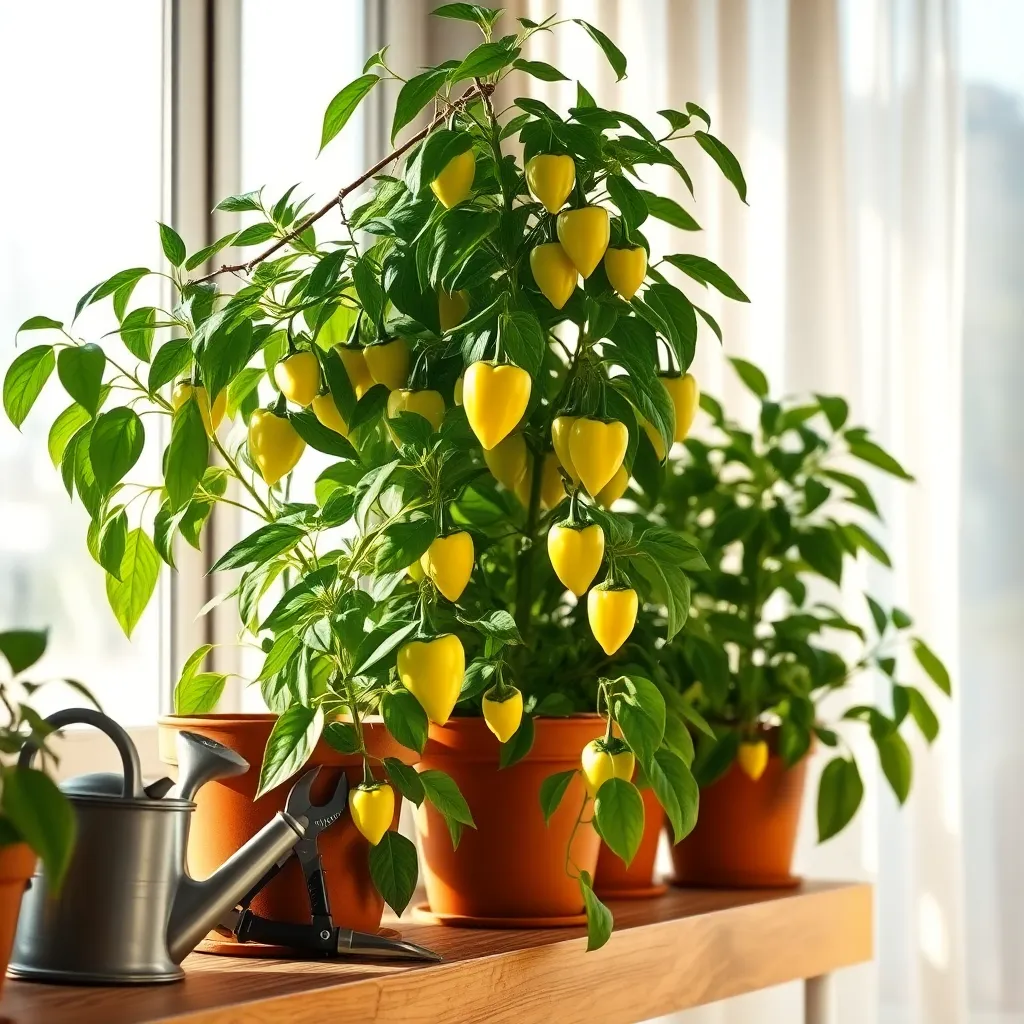
To grow bell peppers indoors successfully, providing the right lighting conditions is crucial. Bell peppers thrive with at least 12 to 16 hours of light per day, so using grow lights is often necessary.
Position your grow lights about 2 to 4 inches above the plants to ensure they receive adequate light without overheating. LED grow lights are highly recommended as they are energy-efficient and provide the full spectrum of light needed for healthy growth.
In addition to artificial lighting, placing your plants near a south-facing window can enhance light exposure. However, be cautious of drafts or extreme temperature changes near windows, as bell peppers prefer stable conditions.
For advanced gardeners, consider using a light timer to automate the lighting schedule, ensuring consistency. This helps in simulating natural daylight hours, promoting robust growth and potentially increasing yield.
Maintain Consistent Moisture Levels
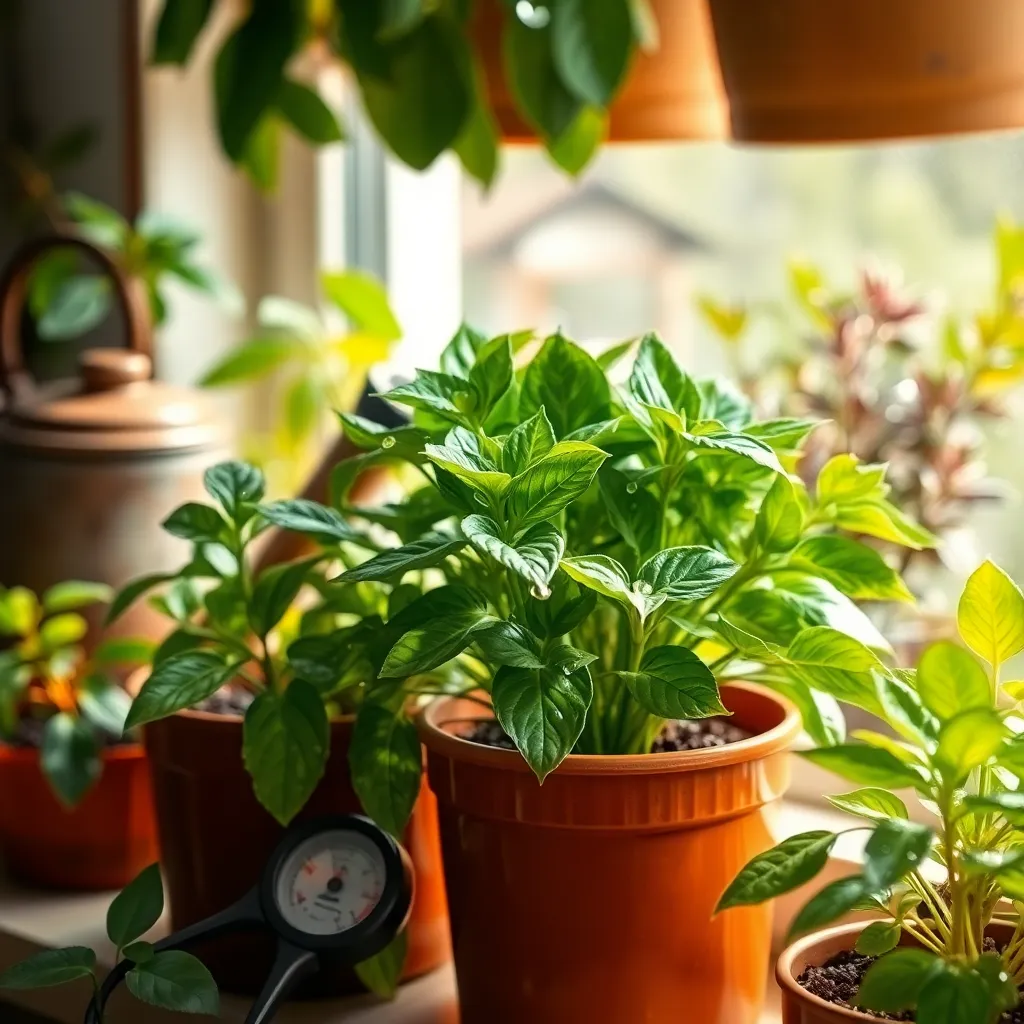
Maintaining consistent moisture levels is crucial for growing healthy bell peppers indoors. Bell peppers require soil that is evenly moist, but not waterlogged, to prevent root rot and other diseases.
To achieve this balance, use a well-draining potting mix, such as one that contains peat moss or coco coir. These materials help retain moisture while allowing excess water to drain away, ensuring your pepper plants get the right amount of hydration.
Water your bell peppers when the top inch of soil feels dry to the touch. This typically means watering about once a week, but frequency can vary based on your indoor climate and the size of your pots.
Consider using a moisture meter if you’re unsure about when to water. This tool can provide a more accurate reading of your soil’s moisture levels, helping you to avoid both under and overwatering your plants.
For more advanced care, use mulch like straw or small pebbles on top of the soil to help retain moisture. This practice can also moderate soil temperature, creating a more stable environment for your plants.
Fertilize and Monitor Growth Progress
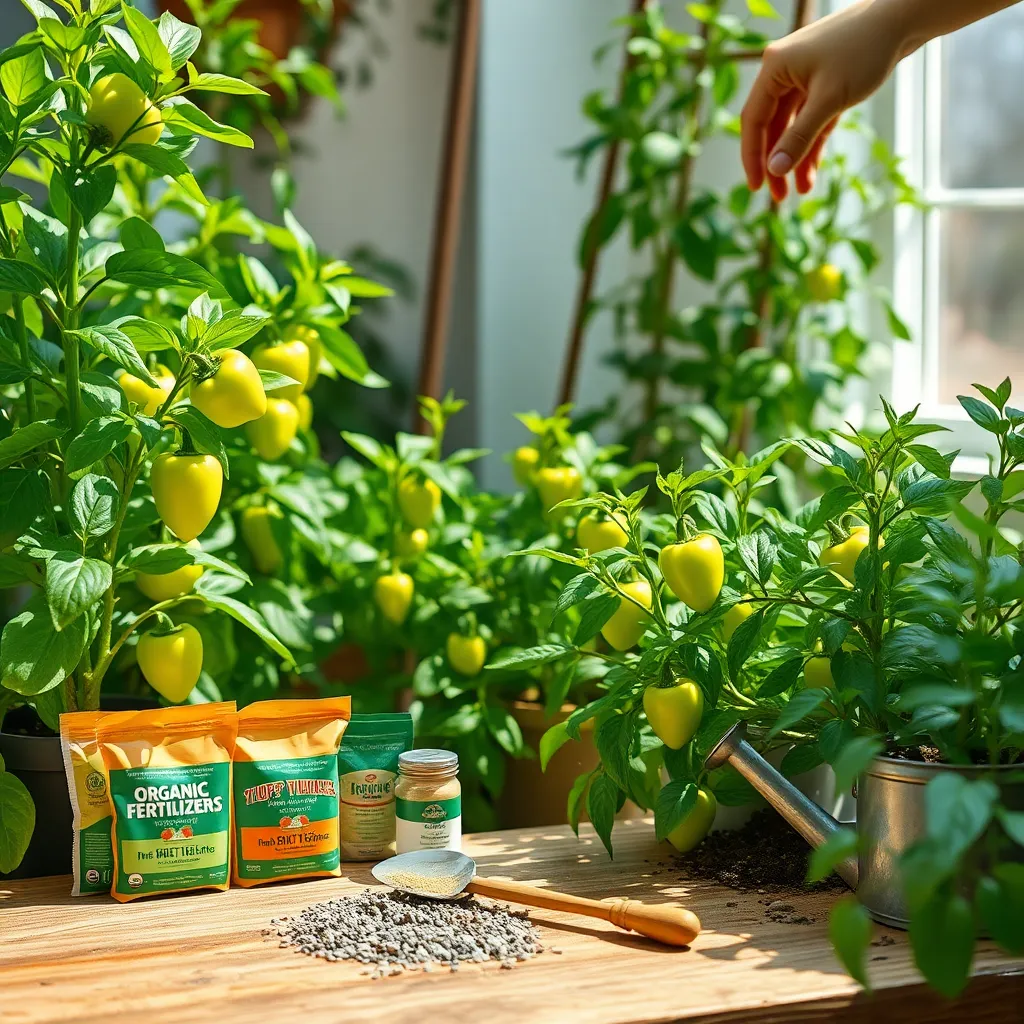
After establishing consistent moisture levels, it’s time to focus on fertilizing your bell peppers to promote healthy growth. Use a balanced fertilizer, such as a 10-10-10 or 5-10-10 blend, and apply it every two weeks to provide essential nutrients.
Ensure you apply the fertilizer at the base of the plant to avoid burning the leaves. Dilute the fertilizer to half the recommended strength, especially during the seedling stage, to prevent nutrient overload.
Besides fertilizing, monitoring the growth progress of your bell peppers is crucial. Keep an eye on the plants’ leaves for any signs of discoloration or wilting, which could indicate nutrient deficiencies or overwatering.
Consider keeping a gardening journal to track growth milestones and any issues that arise. This can help identify patterns and improve your indoor gardening techniques over time.
Advanced gardeners may opt to use a soil test kit to determine the exact nutrient needs of their soil. This additional step can guide you in adjusting your fertilizing plan for optimal results, ensuring your bell peppers receive just what they need to thrive.
Conclusion: Growing Success with These Plants
As we’ve explored the nurturing journey of growing bell peppers indoors, we’ve discovered five key relationship concepts that can enrich not only your indoor garden but also your personal connections. First, understanding the importance of a solid foundation mirrors the need for healthy soil and environment. Second, consistent care and attention, much like regular watering and sunlight, are crucial for growth. Third, adaptability in relationships can be compared to adjusting care based on seasonal changes. Fourth, patience during the growth process highlights the importance of allowing time for development. Lastly, celebrating small victories, like the first sprout, fosters positivity and encouragement.
Your actionable next step is to apply these concepts by identifying one relationship in your life that could benefit from nurturing and attention. Implement these principles to cultivate growth and connection. We invite you to save this article as a handy guide, ensuring these valuable insights are always at your fingertips.
Remember, the seeds of effort you plant today will blossom into thriving relationships tomorrow. Keep growing with intention and watch your connections flourish. Bookmark this article now and nurture your relationships with the same care and patience you’d give to your indoor garden.

